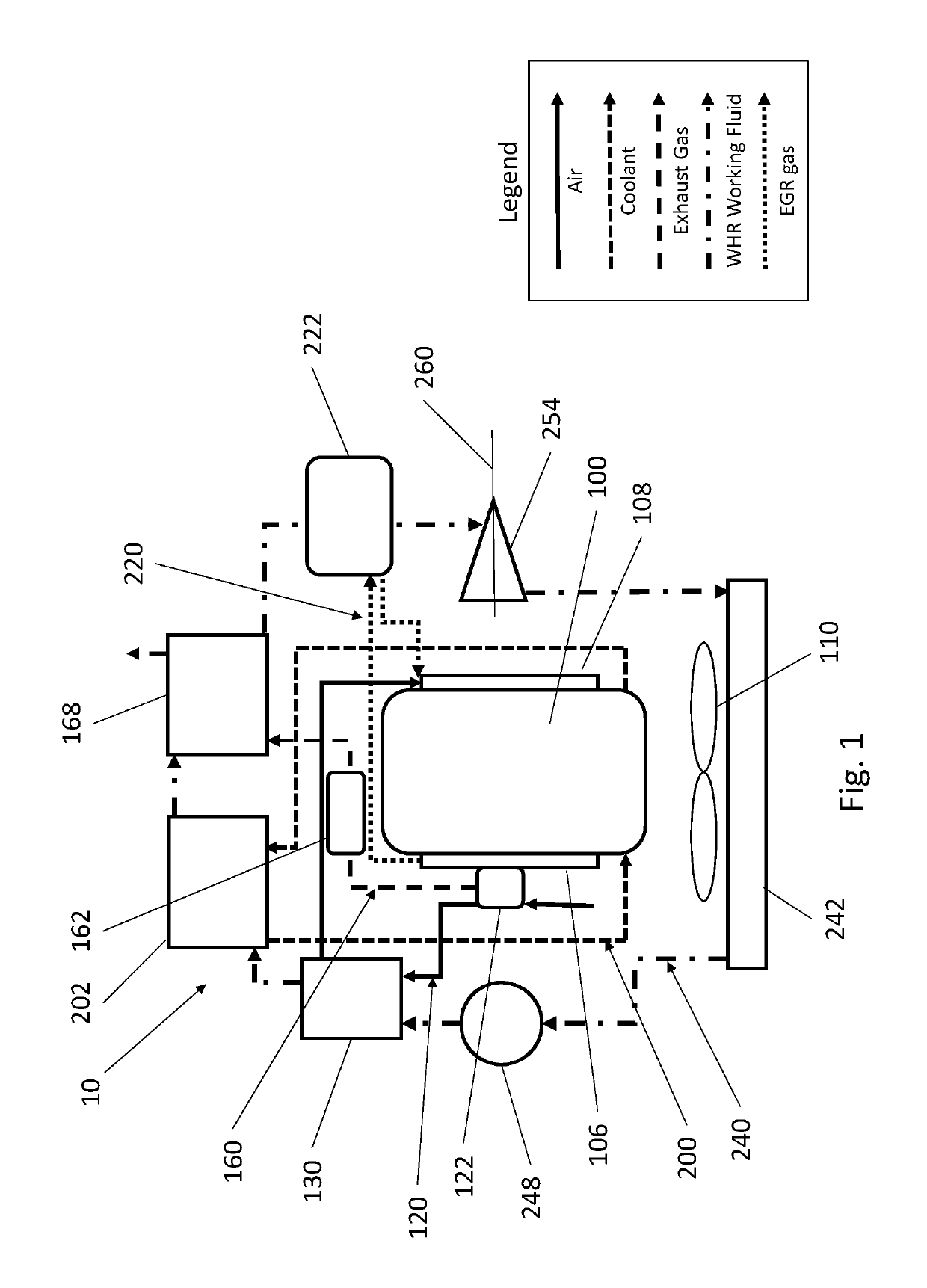Engine cooling configurations with waste heat recovery system
a technology of waste heat recovery and engine cooling, which is applied in the direction of steam engine plants, machines/engines, mechanical equipment, etc., can solve the problems of reducing the thermal efficiency of the whr system, and reducing the cooling efficiency of the engine, so as to maximize the power recovered, maximize the thermal efficiency of the whr system, and achieve the effect of good useability
- Summary
- Abstract
- Description
- Claims
- Application Information
AI Technical Summary
Benefits of technology
Problems solved by technology
Method used
Image
Examples
Embodiment Construction
[0026]Referring now to FIG. 1, a graphical representation of an embodiment of an engine cooling configuration with a waste heat recovery (WHR) system 10 is shown. An engine 100 is provided for converting stored chemical energy in the form of fuel into usable work such as rotational torque and power used, for example, to propel a vehicle. The engine 100 has an engine charge air intake manifold 108 for distributing intake, or charge, air to the several cylinders of the engine 100. The engine 100 also has an engine exhaust manifold 106 for combining and discharging exhaust gas produced by the several cylinders of the engine 100. The engine 100 is further provided with a turbocharger 122 connected to the engine exhaust manifold 106 for compressing charge air to be delivered to the engine charge air intake manifold 108. One or more exhaust aftertreatment devices 162 are provided for reducing pollutants discharged with the exhaust gas.
[0027]An engine coolant circuit 200 circulates engine ...
PUM
 Login to View More
Login to View More Abstract
Description
Claims
Application Information
 Login to View More
Login to View More - R&D
- Intellectual Property
- Life Sciences
- Materials
- Tech Scout
- Unparalleled Data Quality
- Higher Quality Content
- 60% Fewer Hallucinations
Browse by: Latest US Patents, China's latest patents, Technical Efficacy Thesaurus, Application Domain, Technology Topic, Popular Technical Reports.
© 2025 PatSnap. All rights reserved.Legal|Privacy policy|Modern Slavery Act Transparency Statement|Sitemap|About US| Contact US: help@patsnap.com



